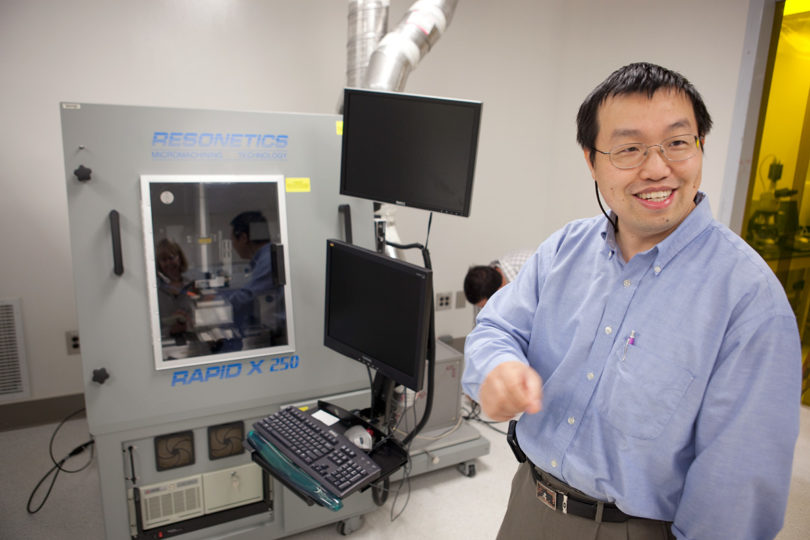UGA physicist Yiping Zhao says nanoscience is big science—the kind that will change lives. Its invisible scale is precisely what makes its potential so tremendous.
A nanometer is equivalent to one-billionth of a meter, or about 100,000 times smaller than the width of a strand of human hair. Scientists work at this scale to understand and exploit the potential of matter—which, because of its scale, takes on new properties—and engineer devices with new applications for health, energy and the environment.
“Bio-nanotechnology has the potential to revolutionize our ability to predict and diagnose a range of diseases from infectious diseases to cancers, and target delivery of therapeutics,” said Zhao, director of UGA’s Nanoscale Science and Engineering Center. “It provides us new opportunities and tools for advances in bioenergy, renewable energy and homeland security as well.”
For seven years, members of NanoSEC, a group of UGA scientists spanning five schools and colleges, have shared a vision: a lab where physical science experiments on the nano-scale would open new windows on biological systems. Last fall, nano-scientists finally began their first experiments in a $2.3 million, 2,200-square-foot nano-bio clean room at the Riverbend South complex. It’s one of only a handful of facilities in the world where devices engineered at the atomic, molecular and macromolecular level interface with biology.
Zhao credits former NanoSEC directors Rich Dluhy from the department of chemistry and Bill Dennis from the department of physics, both in Franklin College of Arts and Sciences; and Carl Bergmann, assistant vice president for facilities in the Office of the Vice President for Research, for sharing the vision of how big nanoscience could be at UGA.
The Georgia Research Alliance contributed $1.3 million toward nano-bio clean room equipment. The University of Georgia Research Foundation provided $1 million for construction.
Research collaborations that engage students and faculty in drug discovery, disease diagnostics and therapeutics, food safety, bioenergy and renewable energy are already under way. Partners include Emory University, the Georgia Institute of Technology and the Savannah River National Lab.
By design, the nano-bio clean room is located by the Georgia BioBusiness Center and infectious diseases research labs. The idea, according to Margaret Wagner Dahl, associate provost for economic development and GBBC director, was to capture all opportunities for start-ups by bringing the different perspectives together.
GBBC is already working with two companies on nano-scale diagnostics and therapeutics. Argent uses Surface Enhanced Raman Spectroscopy to target bio-molecules. Pathens uses a cold-adapted bacterium, Mycobacterium shottsii, for the production of vaccines or vaccine vectors. Argent’s founders are Zhao, Dluhy and GRA Eminent Scholar Ralph Tripp in the College of Veterinary Medicine’s department of infectious diseases. A fourth founder is Georgia Tech biochemist Larry Bottomley. Pathens was formed by Fred Quinn and Russ Karls, both from the department of infectious diseases in the veterinary medicine college.
The clean room’s interface with biological systems will grow tighter. The next phase will build a lab adjacent to the clean room to grow the cells to test the tiny devices they’re making now.





